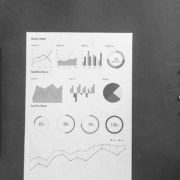Why FP&A Must Start Forecasting Human Behavior — Not Just Numbers
Most FP&A teams think forecasting is about numbers. Revenue. Expenses. Margins. Balance sheets. Cash flow.
But here’s the truth: financial outcomes don’t begin with numbers — they begin with people.
- Sales teams sandbagging pipeline until quarter-end.
- Customers holding renewals hostage for discounts.
- Managers gaming budgets to protect turf.
Numbers don’t lie. People do. And until you build this into your models, your “forecast” is just arithmetic wearing a suit.
The Hidden Risk Behind Every Forecast
Think of it like weather forecasting. Predicting the storm’s path is only half the story. The real impact comes from how people respond — evacuation patterns, supply shortages, travel disruptions.
FP&A without behavioral forecasting is the same. You’ll be right about the storm, but wrong about the damage. That gap is where companies lose millions.
The Behavioral Forecasting Framework
At The Schlott Company, we help SaaS CFOs and finance leaders bridge this gap by building FP&A systems that forecast human dynamics, not just numbers.
Here’s the process we use to bring behavioral forecasting into finance:
- Pattern Mapping — Identify recurring human behaviors that consistently distort financials (quarter-end discounting, renewal delays, budget padding).
- Bias Adjustment — Build multipliers to account for optimism or pessimism biases across functions (sales inflates, ops lowballs).
- Behavioral Scenarios — Layer in responses to organizational triggers (layoff announcements → productivity drops, price hikes → churn spikes).
- Feedback Loops — Record not just numeric variance, but the behavioral cause behind it, to sharpen forecasts over time.
This framework gives CFOs a predictive edge — anticipating not only what the numbers will do, but why.
Why It Matters Now
Markets are unforgiving. Capital is expensive. Investors are asking sharper questions. And static forecasting methods collapse under pressure when they ignore the human variable.
The reward for adopting behavioral forecasting is significant: fewer surprises, faster decisions, and the credibility of being the team that predicts reality — not just spreadsheets.
The risk of ignoring it? Getting blindsided by human behavior that you should have seen coming.
The Future of FP&A
The next era of FP&A won’t be won by better Excel models or shinier dashboards. It will be won by finance leaders who can connect human behavior to financial outcomes.
That’s why The Schlott Company exists: to build decision-systems that anticipate the storm and the human response that follows.
Because the most accurate forecasts don’t start with numbers. They start with people.








